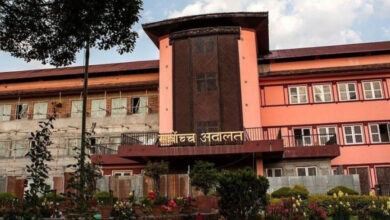Nepal receives highest-ever remittances in a month
The remittance inflow through banking channels hits Rs136.97 billion in the mid-September to mid-October period, largely attributed to Nepal’s festive season.

Kathmandu: Remittances sent by Nepalis living abroad reached Rs136.97 billion in the mid-September to mid-October period, the highest-ever amount in one month in history. The surge has been attributed mainly to Nepal’s festive season and appreciation of the US dollar against the Nepali rupee.
According to Nepal Rastra Bank, the country’s central bank, remittance inflows increased 30 percent to Rs365.34 billion or $2.76 billion in the first quarter (mid-August to mid-October) of the current fiscal year compared to an increase of 16.8 percent in the same period of the previous year.
In the review period, according to the central bank’s report, the number of Nepali workers who took first-time approval for foreign employment stood at 113,397. Similarly, 49,297 individuals were approved for renewed entry.
In total, 162,694 individuals were issued approval to work abroad, other than India.
The central bank report said that under the service account, travel income or expenditure of foreign tourists in Nepal increased by 51.3 percent to Rs17.02 billion in the review period, up from Rs11.24 billion in the same period of the previous year.
Nepal, however, spent Rs51.80 billion for travel purposes abroad, up 76.1 percent year-on-year in the first three months of the current fiscal year.
This includes expenditure of Rs.32.92 billion spent by students to go abroad for education.
According to the report, Nepal’s merchandise imports increased 1.7 percent to Rs407.76 billion in the first quarter of the current fiscal year compared to a decrease of 16.2 percent a year ago.
Destination-wise, imports from India and China increased by 2.4 percent and 42.4 percent, respectively, while imports from other countries decreased by 22.8 percent.
Imports of readymade garments, MS wire rods, bars, and coils, chemical fertiliser, electrical equipment, and textiles, among others, increased whereas imports of crude soyabean oil, crude palm oil, petroleum products, gold, and MS billet, among others, decreased.
During the review period, merchandise exports decreased 2.3 percent to Rs40.87 billion compared to a decrease of 35.7 percent in the same period of the previous year.
Destination-wise, exports to India decreased by 9.4 percent whereas exports to China and other countries increased by 345.9 percent and 9.5 percent respectively.
Exports of zinc sheets, particle boards, juice, cardamom, polyester yarn and thread, among others, increased whereas exports of palm oil, soyabean oil, jute goods, woollen carpets, and rosin, among others, decreased.
The total trade deficit increased by 2.1 percent to Rs366.88 billion during the review period.
Nepal Rastra Bank said that the year-on-year consumer price inflation stood at 7.50 percent in mid-October 2023 compared to 8.50 percent a year ago.
Under the food and beverage category, the year-on-year consumer price index of spices increased 37.63 percent, sugar and sugar products 18.22 percent, fruit 14.02 percent, cereal grains and their products 12.23 percent and milk products and eggs 11.92 percent.
The consumer price index of ghee and oil decreased by 11.61 percent in the review month.
The year-on-year consumer price index of transportation decreased by 1.62 percent in the review month.
The central bank said that in the review month, the consumer price inflation in the Kathmandu Valley, Tarai, Hill and Mountain region surged to 10.23 percent, 5.66 percent, 7.38 percent and 10.24 percent, respectively.
The country’s macroeconomic report shows that the current account remained at a surplus of Rs59.09 billion in the review period against a deficit of Rs35.24 billion in the same period of the previous year.
In the review period, the net foreign direct investment (FDI) remained positive at Rs3.37 billion. In the same period of the previous year, the net FDI amounted to Rs79.6 million.
The balance of payments remained at a surplus of Rs99.07 billion in the review
period against a surplus of Rs12.43 billion in the same period of the previous year.
With the record high remittances, the gross foreign exchange reserves increased 6.7 percent to Rs1.64 trillion in mid-October 2023 from Rs1.53 trillion in mid-July 2023.
Of the total foreign exchange reserves, reserves held by Nepal Rastra Bank increased 6.5 percent to Rs1.43 trillion in mid-October 2023 from Rs1.34 trillion in mid-July 2023.
Reserves held by banks and financial institutions (except NRB) increased 8.3 percent to Rs209.73 billion in mid-October 2023 from Rs193.59 billion in mid-July 2023.
The share of Indian currency in total reserves stood at 22.0 percent in mid-October 2023.




